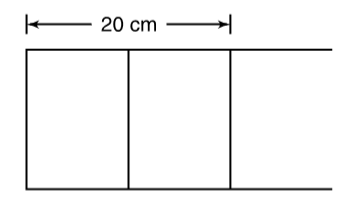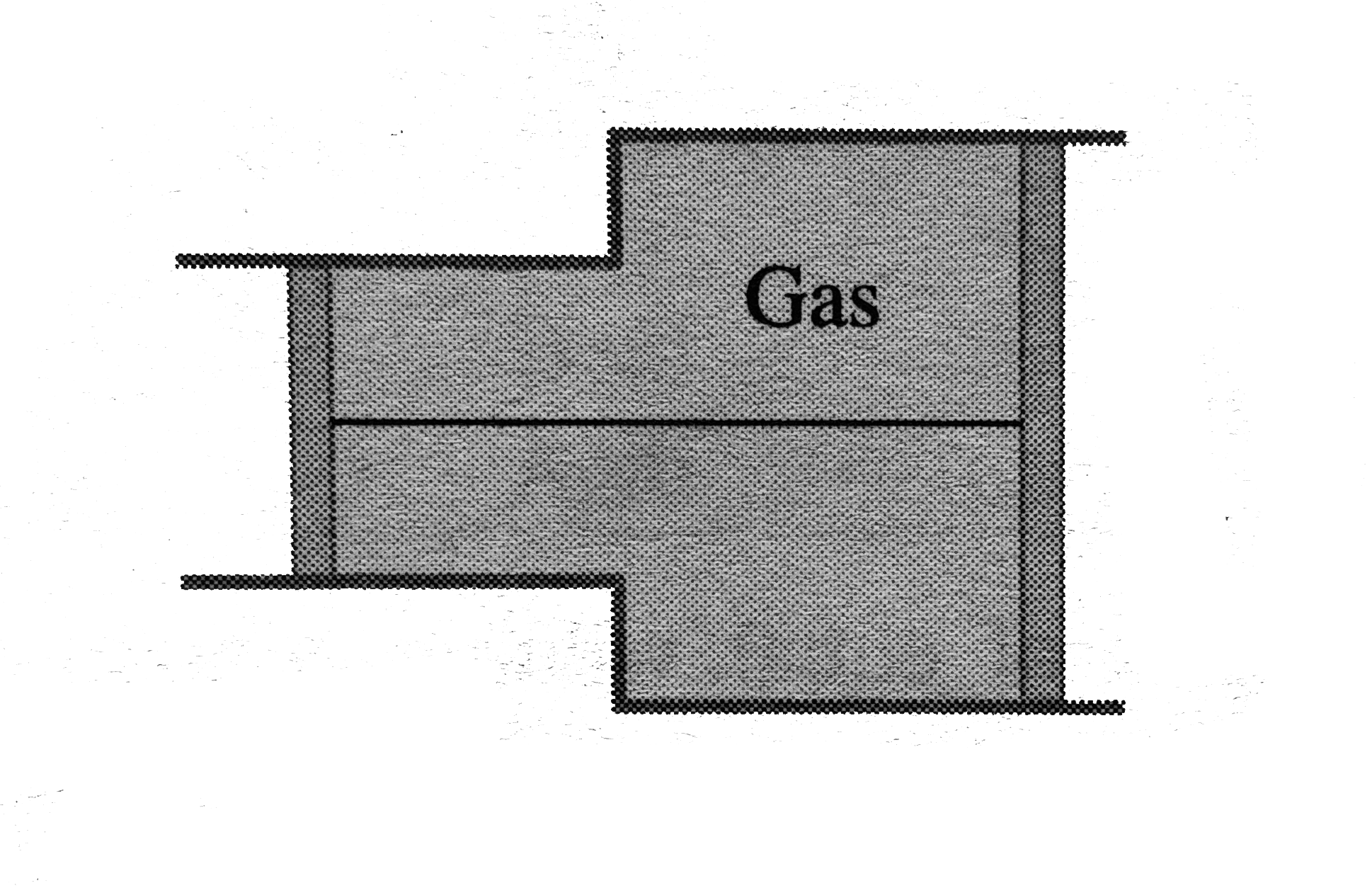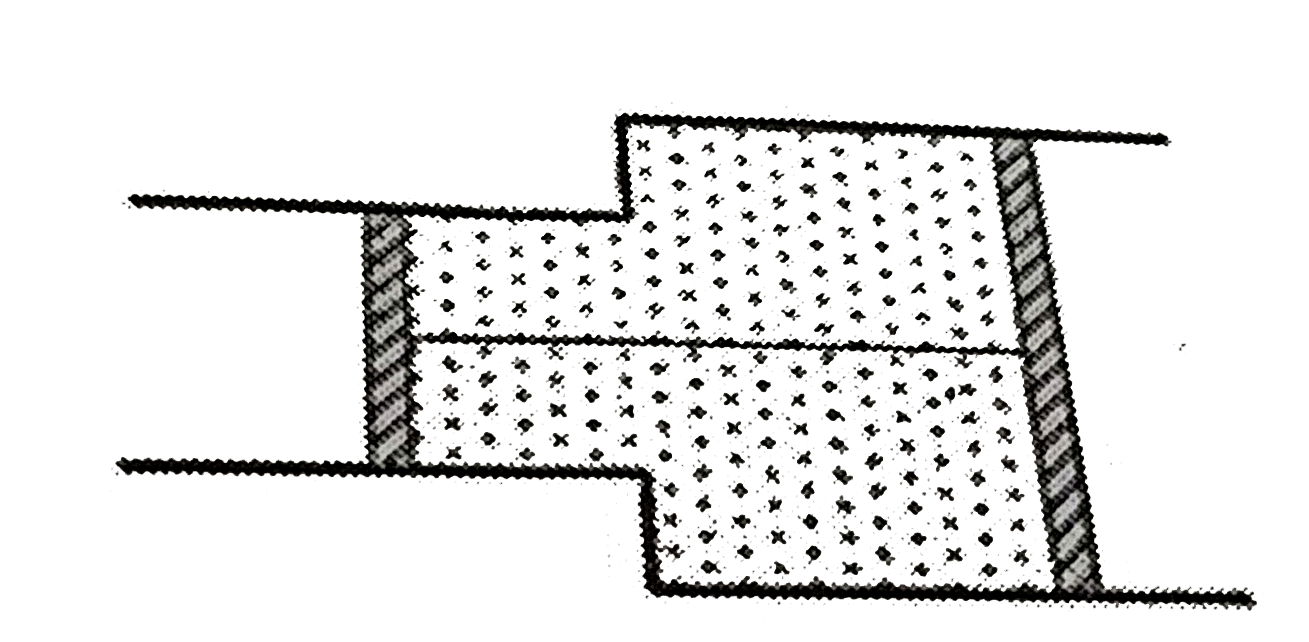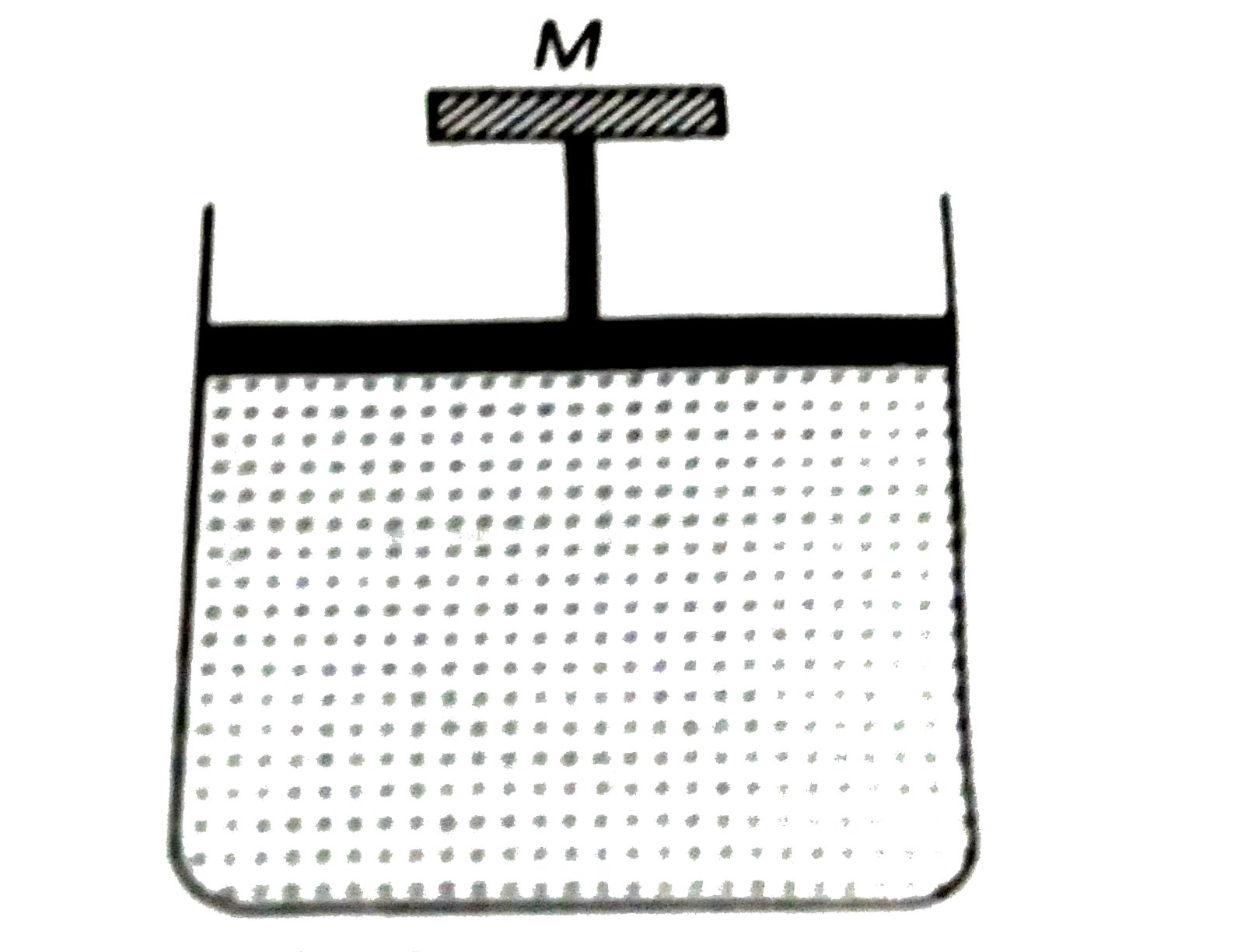In a cylindrical container two pistons enclose gas in two compartments as shown in the figure. The pistons have negligible thickness and can move without friction. The sys- tem is originally in equilibrium. The outer piston is slowly moved out by 10 cm and the inner piston is found to move by 4 cm. Find the distance of the inner piston in equilibrium from the closed end of the cylinder if the outer piston is slowly moved out of the cylinder. Assume temperature of the gas to remain constant.

The correct Answer is:8 cm.
Step by step video, text & image solution for In a cylindrical container two pistons enclose gas in two compartments as shown in the figure. The pistons have negligible thickness and can move without friction. The sys- tem is originally in equilibrium. The outer piston is slowly moved out by 10 cm and the inner piston is found to move by 4 cm. Find the distance of the inner piston in equilibrium from the closed end of the cylinder if the outer piston is slowly moved out of the cylinder. Assume temperature of the gas to remain constant. by Physics experts to help you in doubts & scoring excellent marks in Class 11 exams.
Updated on:21/07/2023Topper's Solved these Questions
- KINETIC THEORY OF GASESBook:ARIHANTChapter:KINETIC THEORY OF GASESExercise:Level 2
Explore 18 Videos
- KINETIC THEORY OF GASESBook:ARIHANTChapter:KINETIC THEORY OF GASESExercise:Level 3
Explore 4 Videos
- KINEMATICSBook:ARIHANTChapter:KINEMATICSExercise:Level 3
Explore 33 Videos
- MOMENTUM AND CENTRE OF MASSBook:ARIHANTChapter:MOMENTUM AND CENTRE OF MASSExercise:Momentum And Center of Mass
Explore 117 Videos
Similar Questions
A gas is enclosed in a cylindrical vessel fitted with a frictionless piston.the gas is slowly heated for some time. During the process, 10 J of heat is suopplied and the piston is found to move out 10cm. Find the increase in the internal energy of the gas , the area of cross section of the gas, the area of cross section of the cylinder=4 cm^(4) and the atmospheric pressure =100kPa.
View SolutionA cylidrical vesel containing a liquid is closed by a smooth piston of mass m as shown in the figure. The area of cross section of the piston is A. If the atmospheric pressure is P0, find the pressure of the liquid just below the piston.
 ,
,
View Solution
Knowledge Check
If the smaller piston is pushed in through 6cm, how much does the longer piston move out?
A23cmB32cmC13cmD12cmThe piston I s now pulled out slowly and held at a diatance 2L from the top. The pressure in the cylinder between its top and the piston will then be
AP0BP0/2CP02+MgϕR2DP02−Mgϕr2A gas is filled in the cylinder shown in fig. The two pistons are joined by a string. If the gas is heated, the right piston will
 Amove toward leftBmove toward rightCremain stationaryDnone of these
Amove toward leftBmove toward rightCremain stationaryDnone of these
A horizontal cylinder has two sections of unequal cross - sections, in which two pistons can move freely. The pistons are joined by a string, Some gas is trapped between the pistons. If this gas is heated the pistons will

View SolutionThe area of the smaller piston of a hydraulic press is 1cm2 and that of larger piston is 22cm2. How much weight can be raised on the larger piston by a 200kg f exerted on the smaller piston?
View SolutionA cylinder containing an ideal gas is in vertical position and has a piston of mass M that is able to move up or down without friction (figure). If the temperature is increased

View SolutionWhile the piston is at a distance 2L from the top, the hole at the top is sealed. The piston is then released, to a poistion where it can stay in equilibrium. In this condition, distance of the piston from the top is
View SolutionA cylinder containing an ideal gas is in vertical position and has a piston of mass M that is able to move up or down without friction (figure). If the temperature is increased

View Solution